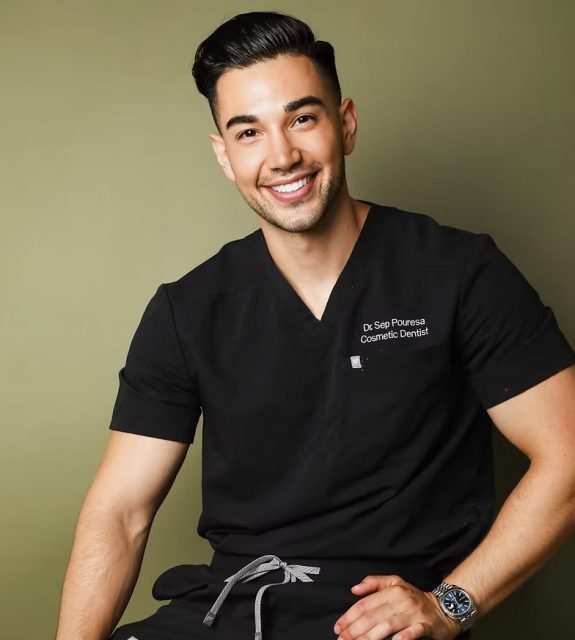Richard LaMarita, a New York City based chef and culinary instructor at the Natural Gourmet Institute, shares his tips for balancing eating and health supportive cooking.
Can you tell me a little bit about yourself?
I am a chef instructor at the Natural Gourmet Institute, a culinary school in New York City, which has been going for close to 40 years. At the Natural Gourmet Institute, we teach health supportive cooking, which means that we are always relating food back to health and healing. This involves maintaining a constant awareness of how food impacts health and we are always instructing our students on how to make proper choices for themselves and for their clients. I love the philosophy of the Natural Gourmet Institute. I have been with the school for almost 25 years. I combine teaching there with private chefing. I have clients all over the city, and out east in the Hamptons during the summer. I do private cooking classes in people’s homes. I would say that my specialty is Indian food, because I have a great deal of experience with it and with Ayurveda. I have been studying Ayurveda for almost 35 years, and have found that it is a great source of knowledge on life and on food.
What are some of the more popular programs at Natural Gourmet Institute?
We have out Chefs’ Training Program, a 620 hour program which can either be done full time or part time. It is not really only to just train chefs, because there is so much to do in this profession. Graduates have gone on to become health coaches, they have created food products, they have helped their parents’ restaurant get the menu updates they needed, they have helped others create dietary plans, they have taught others to cook, and they have also worked at restaurants. At the Natural Gourmet Institute, we understand the many different avenues that a professional chef can take and we train students to do that. If you want to become very serious about your culinary career, we are the school for that.
In terms of public and recreational classes, the ones that I teach are pretty popular. I do classes on Indian food and on making dosas, which are gluten free Indian crepes. I do classes about making daal, working with spices, making pasta. I also teach Ayurveda. At the Natural Gourmet Institute, the gluten free baking classes and the vegan cooking classes are very popular, but we offer a huge range, so there is something for everyone.
What first ignited your passion for food and for cooking?
Cooking has to come from your heart. Every chef has a personal story with food: some are good and some are not so good. I count myself as one of the lucky ones. I love and I eat all different kinds of foods. I was a vegetarian for over 20 years, from my college days onward, but becoming a professional in this field, I realized that it would be better for me to know and eat all different types of food. My mom was an excellent cook, so I grew up on good homecooked meals. She was a real Italian cook, but cooked other things as well. Kids in my neighborhood would always be very excited to be invited over to my house for dinner. When someone was invited over to Vera’s house, they wouldn’t think of not going, whereas if I were invited over to someone else’s house for dinner, my first thought would be to go check on what my mom was cooking that night.
Tell me more about what it means for food to be health supportive.
Health supportive eating is all about making the right choices: choosing high quality foods over low quality foods, choosing grass fed meats over something from an industrial farm, choosing produce which is fresh, local, and organic, if possible, over processed foods. For me, health supportive eating means eating a lot of plants: vegetables, fruits, beans, grains. I eat animal proteins a few times a week and make sure that they are high quality. I try not to get any calories from beverages, so I don’t drink anything with added sugars or added salts. Just think: you are taking in this matter and this food from the outside and putting it into your body. Your body then turns it into tissue and energy. It’s a really important process, and I want to make sure that I am putting good quality fuel into my body. Think of your body as a vehicle or as a really well-made car. You wouldn’t put low quality fuel into it, because you know that it is not going to function properly. You want to put good quality fuel into your body. It takes a little bit of learning, but there is a lot out there to learn from.
The second most important aspect of health supportive eating is preparing the food properly. Food is a big topic these days. Food is not a hard thing to learn. With a little bit of know-how and practice, you can learn how to cook simple meals for yourself. I cook often, and I cook much more than I eat out. If I do eat out, I make sure that it is at a place where they are serving high quality food, so that I can minimize my fast food, junk food, and processed food consumption.
What is your number one piece of advice to people who are hoping to switch to a more health supportive eating plan?
My biggest piece of advice is to do more cooking at home. That’s number one. If you want a dessert, make a dessert and then you will know exactly what is in it. When you do your cooking at home, there is much more awareness of the food that you are using, rather than if you are eating out all the time or buying processed food.
When you shop at any kind of a large supermarket, you should stick to the outsides of the store, rather than going through the aisles. That is where all of the produce is. That is where you find your dairy and your animal protein. You can find good quality, health supportive foods and ingredients there. When you start spending a lot of time in the aisles, you are dealing with a lot more processed food. I understand that people are not professional chefs: they are not going to spend all day in the kitchen, but you also don’t have to spend all day in the kitchen. For example, if you want to buy a prepared tomato sauce, understand that, these days, there are so many choices in terms of variety in quality. You can choose a high quality product, and you can choose a product that is made locally with a minimal amount of preservatives and processed additives in it.
How do you recommend that people teach themselves to be better home cooks?
It is very easy to take a basics class at a culinary school. You don’t have to go through a major program to learn basic kitchen skills. In a few hours, you can learn how to use a knife, or you can take a two or three day intensive to learn techniques that will help you feel very comfortable in the kitchen.
Number two: just get into the kitchen and do it. Buy a few simple cookbooks that talk about basic cooking techniques. Go watch a few cooking shows. Do some research online. If you want to learn how to make pancakes, all you have to do is Google it, and you can come up with a thousand recipes and videos. A lot of cooking is psychological. Sometimes people feel like they need to be experts, and, of course, that is not true. A lot of experimentation and fun should go in the kitchen. Just go a make things.
Just the other day, I was just on the subway, reading a food magazine and looking over a menu I had for a private client. The woman sitting next to me asked me if I was a chef, and she started bombarding me with questions. She loves food, but she doesn’t feel comfortable in the kitchen. She wants to feel more comfortable in the kitchen. She told me that she read about the health benefits of turmeric, so she went out and bought some. The turmeric was sitting on her shelf and she didn’t know what it do with it, so I gave her some advice. I told her: when you make your rice, put some turmeric into the water with your rice. You can mix a little bit into your eggs in the morning. You can add a little bit of it into a salad dressing or you can sprinkle a little bit of it onto your vegetables, before you roast your vegetables. Suddenly she had four or five ways to use turmeric that she hadn’t thought of before, so there are very simple approaches like that.
What is your favorite seasonal thing to cook?
Recently, I have been making a lot of slaws. They go really nicely with everything. It’s not like a salad where, once you dress the salad, you have to eat it immediately. Slaws can be very creative, because you can use all different types of vegetables: baby kale, all different types of kale, apples, celery, jicama, daikon, radish, red cabbage, any sort of hard winter vegetable. For the dressing, you can use simple olive oil and lemon, olive oil and balsamic, or olive oil and red wine vinegar. Throw in some spices, like turmeric, black pepper, or poppy seeds. I always have probiotic foods, like kim chis and sauerkrauts, in my fridge. I often pull them out and add them to the slaws. Probiotic foods add some more flavor and a health supportive element of live bacteria. Sometimes I will chop up something from my garden and throw that in.
I might add some salmon to make it a complete meal. I just sear the salmon for some nice color on one side, and then I put it into the oven at 250 degrees for about 15 minutes. You get a piece of salmon with a nice crispy top, which absolutely melts in your mouth.
Kale – Apple Coleslaw with Poppy Seed Dressing
Serves 6 - 8
Ingredients
3 tablespoons cider vinegar
2 tablespoons agave
2 teaspoons Dijon mustard
1 lemon, juiced
1 ½ teaspoons poppy seeds
salt / pepper
6 tablespoons EV olive oil
1/3 cup red onion, small dice
1 lb. flat – leaf kale, tough stems removed
2 granny smith apples, cored and sliced into matchsticks
Procedure
Place the vinegar, agave, Dijon, mustard, poppy seeds, and salt / pepper in a bowl. Whisk in oil until and add red onion.
Cut kale in ribbons. Toss with dressing. Toss in apples and fold into salad.
Seared & Slow–Cooked Salmon
serves 4
Ingredients
4 (6 oz.) skinless, boneless salmon filets
salt / pepper
3 tablespoons EV olive oil
Procedure
Heat oven to 250 degrees F. Season fish with sat / pepper. Coat the fish with 1 tablespoons EV olive oil. Heat a cast iron pan very hot.
Add 2 tablespoons oil.
Place fish down and sear until golden and caramelized, about 1 – 2 minutes. Gently pick up with fish spatula. Place fish on baking sheet.
Place in oven and roast until medium rare, about 9 minutes.
Serve with a sauce of your choice such as a pesto or tomato.























